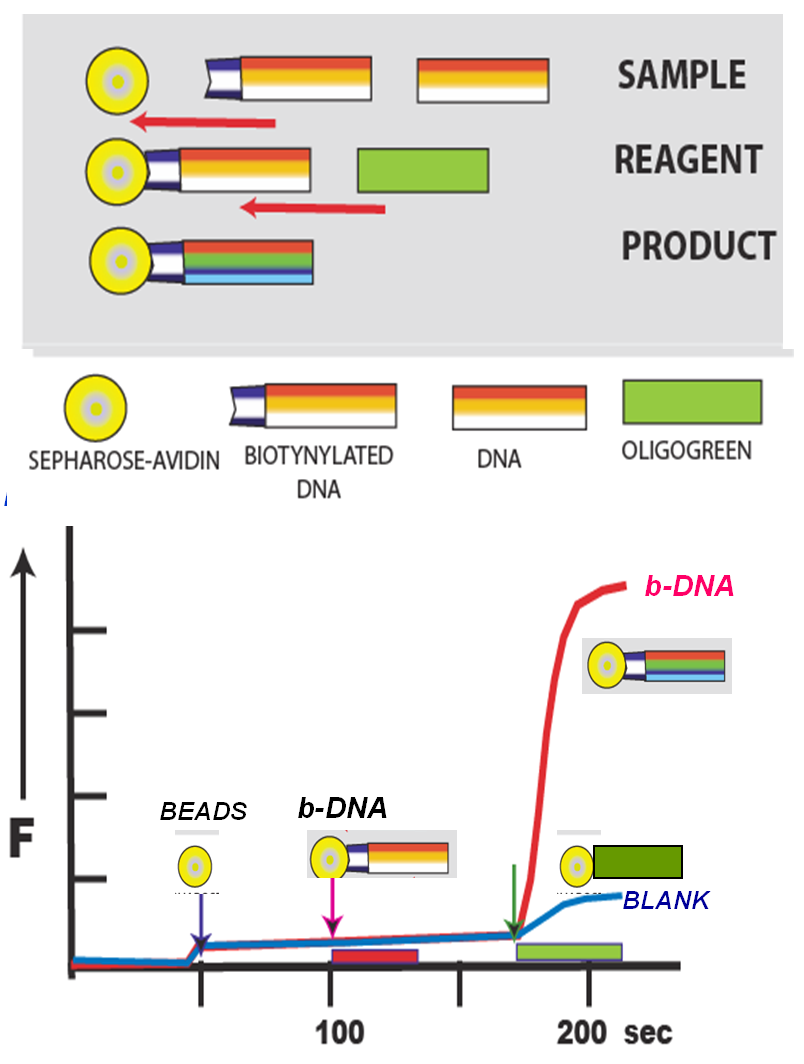CASE STUDY #3: Nonselective Adsorption
3.5.20.
Biotin-avidin and biotyn-streptavidine interactions are frequently employed for bioligand separation due to their avidity and selectivity. Therefore separation of biotynyalted DNA (b-DNA) from native DNA on avidine or streptavidine Sepharose beads should have been a trivial task.
Unfortunately it turned out that non selective adsorbtion of DNA on support beads turned to be a serious problem,
The detection of captured DNA and b-DNA by derivatization with Oligreen, that produces fluorescence upon intercalation within DNA molecules quantified both DNA and b-DNA captured on Sepharose beads.
While ideally one would expect only b-DNA response as shown by the red curve while in absence of b-DNA, a small increase of baseline due to minor nonselective adsorbtion of Oligreen on Sepharose (blue curve) would be acceptable.










